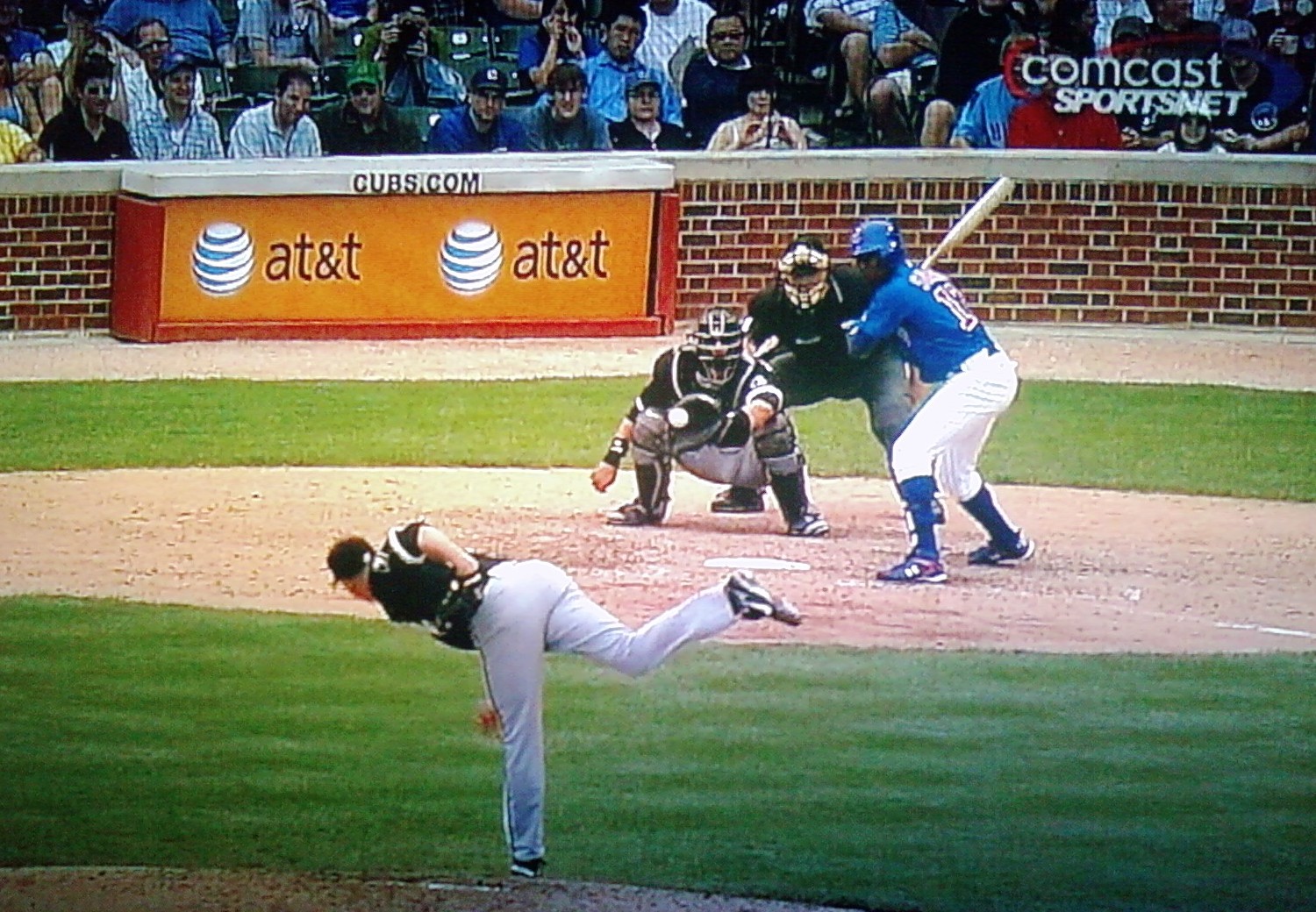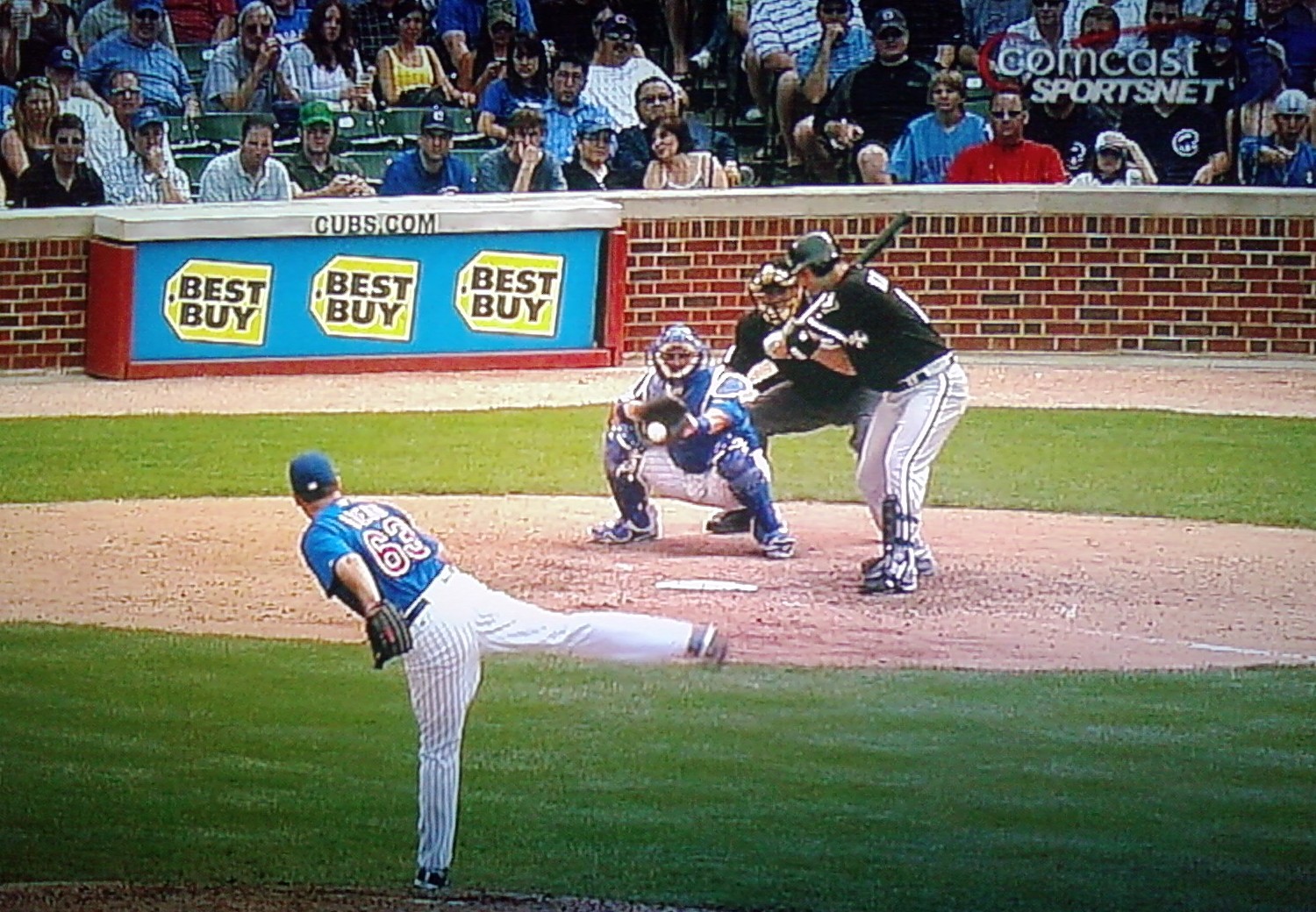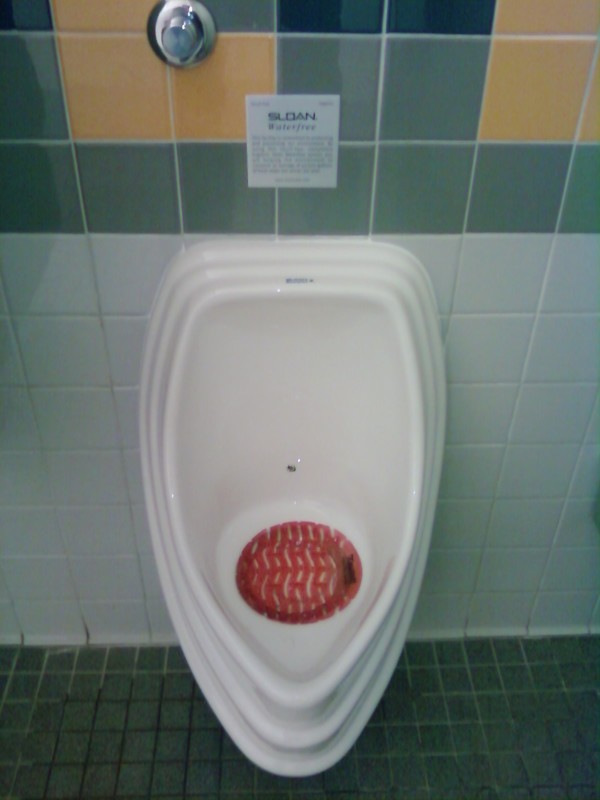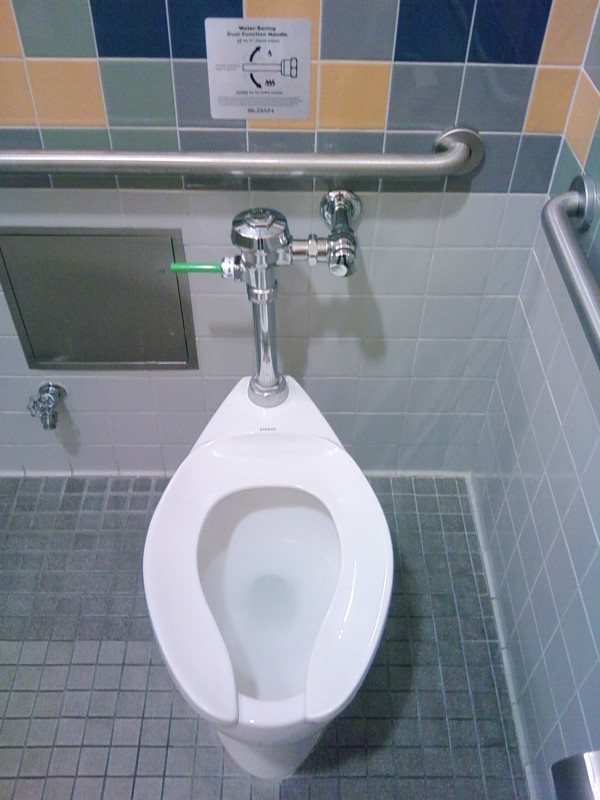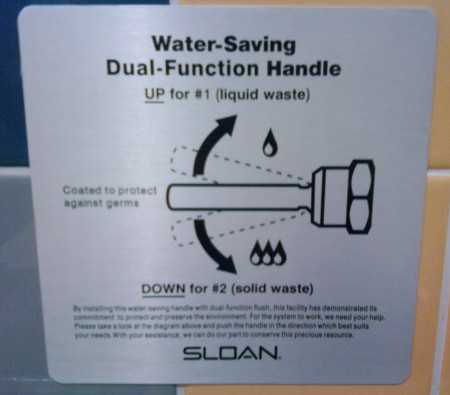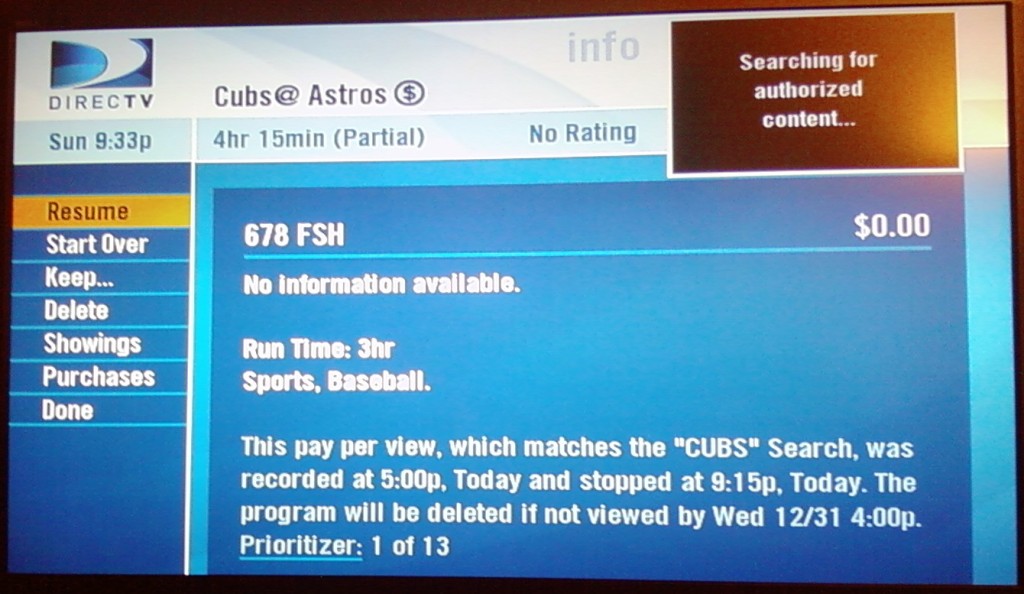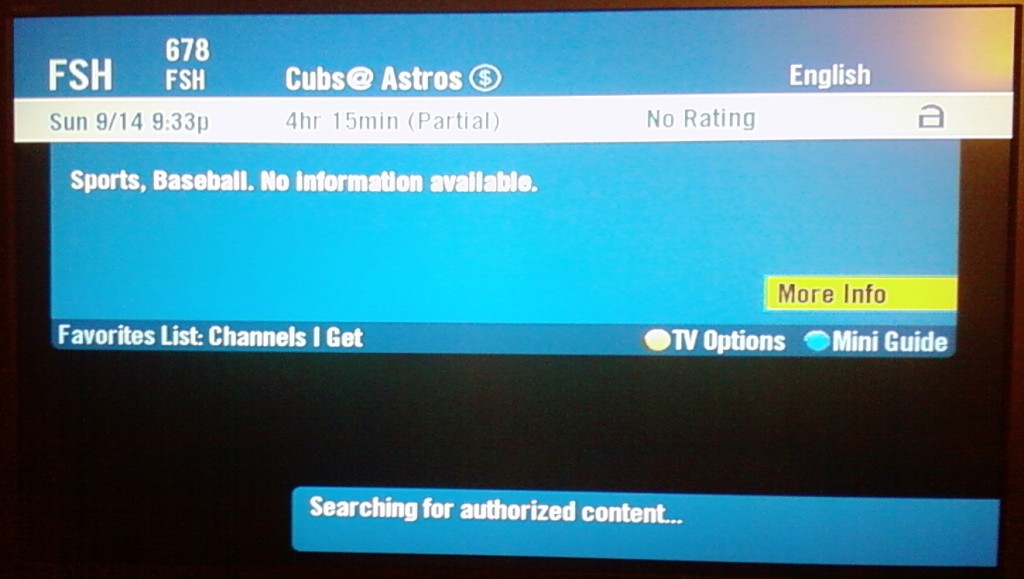In general, and with very few exceptions, I dislike the very concept of a movie remake. To me, film is an art form, and there is not much interesting about imitation art. Sure, it’s good to see a play when it comes to your town, and such productions are always featuring rotating casts. But a play is ephemeral; there’s no other choice. With a movie, I can see the original by any number of means, and it’s the exact same experience every time—and sometimes, as in the case of remastered videos, or, say, if I upgrade my TV, the experience can even improve.
Cover songs are different as well. A live performance is one thing—it’s in the moment, and exciting—but for the most part the original is always better. (There are a couple of exceptions, of course—Hendrix doing “All Along the Watchtower” being the most ready example, but Nirvana’s version of “The Man Who Sold the World” also comes to mind.) For the most part, though, a band doing a cover is only a novelty—and it’s certainly not often taken as much of an artistic contribution in its own right.
Paintings—the old-school kind of “art”—are, perhaps, the most like film in this regard. Photography, too. There’s something beyond the end product on a canvas that makes it art. Your buddy Jimmy may be able to make an exact replica of the Mono Lisa, but nobody would care to see it.
With movies, though, this isn’t the case. The general thinking—particularly in recent years—seems to be that if it made money once, it’ll make money again… and to many people (those who decide which films get made and which don’t, in particular), making money is all that matters. It may be an art form, but it’s also a business.
Even recognizing this, the following has me completely baffled:
It’s a film called Death At a Funeral. It’s a remake of a British film of the same name that just came out 3 years ago (in 2007). The original is in the same language. It had a theatrical run in the U.S. It’s readily available to rent, from Netflix or your local video store.
Having seen the original, I feel pretty confident saying, based on the above trailer, that this remake is more or less the exact same movie. I feel even more confident saying this because the trailer shows you nearly the entire film. They’ve even cast the same dwarf (Peter Dinklage) to reprise the same role. The only differences I can detect are token dialogue changes done to make it “a black movie” (Chris Rock‘s line at the end of the trailer—”and you’re mad ’cause he’s white?”—for instance).
So what is the point of this? I can understand, to an extent, making a film that’s “inspired by” an earlier one (Chris Rock’s own I Think I Love My Wife, for instance). I can even understand redoing a successful film that was originally in another language—there’s a forthcoming Americanized version of Let the Right One In, and while I don’t think it’ll be as good as the original, I can at least admit that it’ll get a wider audience in this country (Americans don’t like reading subtitles).
The counter-example that often comes up in defense of remakes—especially for me— is Hitchcock, who remade his own The Man Who Knew Too Much, but that was a different era. He made the original in England at a time when British films didn’t get much American distribution, not to mention the fact that it was long before the advent of home video. His American remake of that film—22 years later, mind you—would’ve truly been new to American audiences, who would’ve been lucky to have even been aware of the original, much less have seen it.
Death at a Funeral is a totally different situation, both due to the era in which it was made—things happening in Britain aren’t exactly completely unknown to American audiences these days—and the fact that it’s been less than 3 years since the first version came out. I think the latter point is what really bothers me about this particular example, but the whole situation in general is something I find really annoying.
I realize that I may as well be yelling, “Get off my lawn!” here. And the truth of the matter is, as long as there’s money to be made, there’s no shame among those providing the production dollars in what they get spent on. And recognizing that I can’t control anybody (and wouldn’t want to, at that), I can only hope that this recent example of this altogether ridiculous phenomenon is a complete flop, because that’s the only thing that’d go anywhere towards ending the trend. For whatever it’s worth, the original is pretty good; it’s a cute, funny little movie, the kind that makes for a really enjoyable rental on a Sunday afternoon. And having seen the original, I feel pretty confident saying that the trailer above leaves pretty much nothing left to be discovered in the film itself. It’s not only one of the worst trailers I’ve ever seen because of the film it’s advertising, and the fact that its very existence is something that I find to be somewhat offensive; it’s also one that essentially functions as a summary of the entire movie, which is something I’m sure I’m not alone in being annoyed by.
As they would say on the recently-canceled “At the Movies“… Skip It. Please.
Comments Off on Worst Trailer Ever
One of the things I’ve found (to my pleasant surprise) that I enjoy about having the MLB Extra Innings package on DirecTV is that I get to watch a lot of baseball games with other teams’ announcers calling the plays. While the quality of the commentary varies widely—particularly in regards to the hometown bias factor—it’s kind of nice to watch some games from the other team’s point of view. I also get a nice sampling of what kinds of coverage and commentary there are around baseball. A lot of the time this gets annoying, though, especially with some of the smaller-market teams, which aren’t able to attract (and pay for) quality announcers.
In the NL Central, which is the majority of the baseball that I end up watching, the Cardinals, Pirates, and Reds tend to have announcers that shade more towards the “hillbilly fan” end of the spectrum, while the Cubs, Astros, and Brewers have guys who come across more as professional broadcasters in their booths. In the case of the Cubs and Astros, I think this is because they’re major-market teams; in the case of the Brewers, it’s because they have Hall of Fame announcer Bob Uecker calling the plays, who’s one of the best around. While I’m obviously preferential towards Len and Bob—I think they provide a tasteful amount of home-team favoritism while still keeping things professional, although they are occasionally a bit dry—it’s surprisingly fun to give some of the other announcers a listen from time to time.
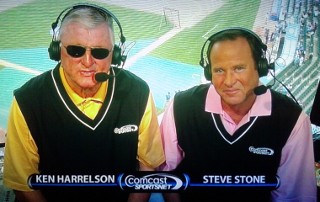 That’s not to say that they’re all good, and tonight’s Cubs-White Sox game provided a remarkably obvious example of how bad some announcers can be—especially when they’re frustrated with their team and overly invested in it to the point of becoming unprofessional. In this case, we have Ken “Hawk” Harrelson, who has called games for the South Siders for 20 seasons now. Most Sox fans I know tend to like Hawk’s unabashedly biased play-calling, which he often supplements with shameless cheerleading. This is all well and good, if that’s the kind of commentary you prefer. The flip side of that coin, though, is that he sometimes comes across as the worst kind of fan: the umpires are always out to get the Sox, the opposition sometimes makes lucky plays while the Sox are just downright talented, things like that. I’m actually fine with this; while I think I’d find it a little embarrassing if my team’s announcers were so partisan, Sox fans seem to like him and appreciate his style, and that’s cool with me. Just don’t flat-out lie about the game you’re calling, please.
That’s not to say that they’re all good, and tonight’s Cubs-White Sox game provided a remarkably obvious example of how bad some announcers can be—especially when they’re frustrated with their team and overly invested in it to the point of becoming unprofessional. In this case, we have Ken “Hawk” Harrelson, who has called games for the South Siders for 20 seasons now. Most Sox fans I know tend to like Hawk’s unabashedly biased play-calling, which he often supplements with shameless cheerleading. This is all well and good, if that’s the kind of commentary you prefer. The flip side of that coin, though, is that he sometimes comes across as the worst kind of fan: the umpires are always out to get the Sox, the opposition sometimes makes lucky plays while the Sox are just downright talented, things like that. I’m actually fine with this; while I think I’d find it a little embarrassing if my team’s announcers were so partisan, Sox fans seem to like him and appreciate his style, and that’s cool with me. Just don’t flat-out lie about the game you’re calling, please.
I’ll try to set the stage: it’s the bottom of the 8th inning, with the White Sox winning 5-1. The Cubs’ first batter (Micah Hoffpauir) reaches base on an error. The next batter is Alfonso Soriano, who with 2 strikes in the count gets this pitch:
The Hawk is convinced that’s an obvious strike: “That ball had the plate. Had the outside edge of the corner.” The above picture is from the replay they showed, which Hawk was convinced reaffirmed his belief that it should’ve been a called third strike. His color man, Steve Stone (formerly the Cubs’ color commentator), tries to remain more diplomatic about it, but humors his partner just the same and agrees with him that it was probably a strike. Honestly, I think it’s one of those pitches that could’ve been called either way, but in the picture above I think it’s definitely more ball than strike. But whatever, the subjectivity of the umpire calling balls and strikes is part of the game, right?
On the next pitch, Soriano gets a base hit. The next two batters (Ryan Theriot and Milton Bradley) are retired, bringing the hot-streak-riding Derrek Lee to the plate with 2 outs, who proceeds to hit a 3-run homer. (Sub-rant: Why doesn’t MLB offer the ability to embed their videos?)
Next up is Geovany Soto, who also hits a home run, tying the game. Harrelson proceeds to lose it, repeatedly referring to the Sox giving up “4 unearned runs” to allow the Cubs to tie the game. For those of you keeping score, only the run scored by Hoffpauir was actually unearned, because he reached on an error. Soriano had a base hit, and Lee and Soto hit home runs, all of which are most decidedly earned runs on every score sheet except for Hawk’s. (I think he might’ve been trying to imply that Soriano reaching base was the result of an “error” on the home plate umpire, but he never clarified). So much for accurately reporting the events of the game. (Update: Apparently I am incorrect in my interpretation of how these runs should be scored; see the comments below for clarification.)
One of my biggest pet peeves with sports announcers in general is that they like to imply that if you changed the outcome of a single play, it is reasonable to assume that ensuing plays’ outcomes will remain unchanged. Hawk is happy to commit this commentator sin as well: he believes that had Soriano gotten out on what he felt should’ve been a called third strike, then Theriot and Bradley would’ve proceeded to get out in the same fashion as they actually did, and the inning would’ve been over without the Cubs scoring any runs, much less 4. As if them batting with an additional out, or with fewer runners on base, would be the same. Who’s to say the same pitches would’ve been thrown to them, with the same amount of success, their swings would’ve been the same, and all of the other little variables that contribute to how a single at-bat plays out would remain invariant? It’s nonsensical to think this way. (And in fact, I tend to believe that any time one endeavors to comment on what “would have” happened in almost any situation—sports or otherwise—they’re likely doing little more than demonstrating willful ignorance… Generalizations like “if that bomb had gone off, people would have died” aside, of course.)
It doesn’t quite end there. In the top of the 9th inning, with Paul Konerko batting, he gets thrown “the same pitch” (according to Harrelson), which is this time called a strike.
Hawk can’t take it: “Why is that a strike on him, but it wasn’t a strike on Soriano?” he asks. I think the proof is in the pictures, which incidentally were taken from the same replays he was watching while continuing to whine about the supposedly-biased umpiring.
In the bottom of the 9th, Soriano—the beneficiary of the non-strike call that got the Cubs’ rally started in the first place—knocked in the game-winning run, just to rub it in. “5 to 1 lead going into the bottom of the 8th inning… 4 unearned runs… and they pitch to Soriano, and he gets the base hit,” Hawk summarizes.
There’s nothing wrong with being passionate about your team, even in the case of an announcer. In fact, this is one of the things that makes baseball unique: each team has their own set of commentators, who bring their own perspective to the games, and can typically assume that their audience consists largely of that team’s fan base. But going overboard by trying to frame the events of the game you’re calling in an untruthful manner, and then whining about it on top of that, isn’t something I can imagine anybody enjoying. (Stone, I should say, remained silent every time Hawk mentioned the “4 unearned runs,” presumably not wanting to get into an on-air fight with his incensed partner.)
At least he faithfully reported the outcome of the game: Cubs 6, White Sox 5. Whether the runs were earned or not.
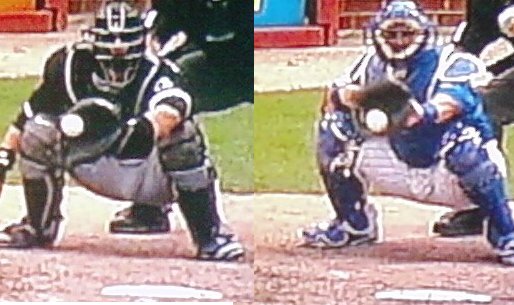
Since I live on the west coast, I only rarely get to watch baseball games live. My team, the Chicago Cubs, plays most of their games at either 1:20pm or 7:05pm Central, and I’m rarely home from work in time to catch the beginning of even the later-starting games. I don’t really mind this, because watching on DVR delay means I can skip through commercials, and I’m typically busy enough at work that not spoiling the score (or outcome, in the case of earlier games) isn’t too difficult (although sometimes, when the sky is clear, I’ll listen to a day game on XM while at work, but that’s a different situation). The ideal goal is to have just the right amount of buffer built up so that you catch up to real time in the bottom of the ninth inning, having missed all of the commercials but seeing the game end live. I’m almost always a bit off from that, though, as I don’t usually begin watching a game until a couple of hours after it’s started.
Because of my viewing schedule, and my desire to remain ignorant of anything that’s happening with a particular game I’m going to watch until I’ve seen it for myself, I have my DirecTV +HD DVR set to record every Cubs game from the time it starts until 3 hours after it’s scheduled to end (that’s the max amount of additional recording time for a particular program that the software offers). This gives an allowance for rain delays and/or extra-innings games. Since I watch games every day, the wasted disk space on the DVR isn’t much of a problem—I just delete each game after I’ve finished watching it (which is usually while it’s still recording, due to the extra 3-hour record time).
This sounds like it’d be a good situation for someone like me, and it is, for the most part. The problem with it, though, is that it relies on heavy use of the DirecTV DVR software, which I have now decided is definitely the single worst piece of software I’ve ever had to use on a regular basis. Last year it made me miss Zambrano’s no-hitter, and while there hasn’t been anything quite that dire yet this year, it has nonetheless found other ways to annoy the ever-loving shit out of me on a way-too-frequent basis.
The most recent example involves the way DirecTV tries to be way too clever with their guide: despite the fact that they dedicate an entire channel—two, actually, for games that are available in both standard-definition and HD—to a game for a whole day, for some reason when the game actually ends they update their guide information so that the receiver/DVR knows the game is over. This results in the guide deciding that the channel is now devoted to a different, upcoming game, which, despite the fact that I have the MLB Extra Innings package and would be able to watch when it’s actually on, I am not yet authorized to receive. The result of this is that when I’m tuned to that channel—or in my case, watching DVR-delayed content from earlier on that channel—the DirecTV DVR decides that I am not authorized to watch it, and finds it necessary to repeatedly inform me of this… while I’m still watching the game.
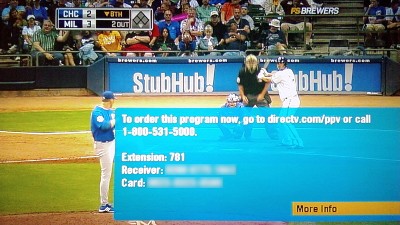
This is what last Friday night’s Cubs-Brewers game looked like for me during the final few innings (click to enlarge)
So I get this annoying box popping up, occupying over a quarter of the screen, at random intervals and for seemingly-random lengths of time… and it doesn’t respond to my remote’s “exit” button. I can select the “More Info” box, but all that does is obscure the screen even more, until I hit “exit,” at which point the info box disappears for a few seconds before popping up again. This happens from a point shortly after the game ends (I think it’s a half hour) until I’m done watching it.
An illustrative timeline might clarify, if my description has been confusing at all:

What’s really odd is that this doesn’t always happen. From my casual observations, it seems to only come up when I’m more than a certain amount of time behind real time. For example, call the difference in time between when the game starts and when I begin watching it “interval A,” and the difference in time between when it ends and when the guide data changes “interval B.” I think that if interval A is greater than interval B, then at “interval B” time after the end of the game, the “To order this program now…” box will begin displaying on the screen. (The corresponding guide data change would be, in this instance, from “Cubs @ Brewers [HD]” to “Upcoming: Cardinals at Reds.”)
The one solution I’ve found is as follows: once the box starts being displayed, I have to stop watching the game and change the channel to something normal (i.e., not part of a sports package). I then have to stop the recording, and then resume watching the recorded game. I’m always a little nervous to do this, though, because I’m not positive that my theory of what causes this to happen is correct, and I don’t want to stop the recording only to find that I’ve caused myself to miss the end of the game. And it doesn’t always do the trick, anyway. At any rate, it’s really not something I should have to contend with in the first place, and the fact that it’s just the result of sloppy programming on DirecTV’s part only makes it that much more annoying when I do.
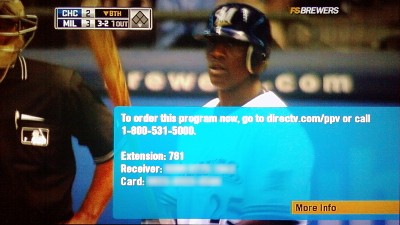
There’s a particular facility where I find myself spending a significant amount of time working. It’s a nice place, fairly new, and the people who work there are very friendly and helpful. The one thing that always strikes me as odd about it, though, is their overzealous commitment to not only “being green,” but in the lengths they go to in order to prove just how “green” they are. In fact, they’ve made some changes in recent months that I feel take the concept to a ridiculous level. Even though I’m not supposed to be allowed to bring a camera into this facility (which is part of the reason why I’m not mentioning the name of it), I went ahead and took some pictures with my phone to show what I’m talking about.
When we first moved into this place, I spent about a month working there every day. I then had no need to be physically present for a couple of months, but recently I’ve found myself there again most days. The first time I returned after an absence, the fact that they’d made some changes (I’m sure they’d call them “improvements”) was obvious even from the parking lot:
The spots with the white signs—the ones that are actually closer to the entrance than the handicapped spots—are now reserved for “low-emitting/fuel efficient vehicles.” (Yes, I realize that the handicap parking spots are closer to the wheelchair ramp in the sidewalk, but it still seems funny to me that if you drive a Prius you get a shorter distance to travel to the entrance than somebody in a wheelchair.)
Of course, the several times that I’ve been to this place since noticing the appearance of these signs, I’ve never seen a vehicle parked in those spaces, low-emitting or otherwise. I’ve considered using them myself, just because, but I’m pretty sure they have carte blanche to tow me if they so choose.
On the front door to the facility is a sticker proudly proclaiming that they are a “Bay Area Green Business,” which I suppose isn’t such a big deal, as far as self-congratulating back-patting goes.
What cracks me up the most about this place, though, are the bathrooms. They, too, have been renovated in order to become more “green,” and the results are nothing if not strange. The urinals in the men’s rooms were replaced by “waterfree” versions:
A quick search reveals that these are the WES-2000 model from Sloan, which utilizes some sort of cartridge to collect “sediments” while all liquid goes down the drain. Visible on the wall in the above picture (next to the capped pipe end where the water supply for the old urinal used to be) is a sign that they’ve proudly mounted, informing the user of the great environmental impact of using waterfree urinals.
I’ve had plenty of opportunities, while standing in front of these things, to do the quick mental math required to become a bit dubious of this claim. If the average “normal” (“old?”) urinal uses 40,000 gallons of fresh water per year, at 1.6 gallons per flush, that means it is flushed 25,000 times per year, or 68 times a day. Maybe in a busy bar, I could see this, but in a low-traffic establishment (which this is), that seems preposterous to me. (Even Sloan’s own website doesn’t make such lofty claims, estimating the water savings instead between 9,600 and 24,500 gallons per year… Although, if Sloan didn’t make that sign, who did?)
I assume that I’m not alone in that, when hearing the words “waterfree urinal,” the first thing I think of is “stale-piss-smelling bathroom.” Thankfully, this is not the case. The WES-2000 has some sort of air freshener in it, so that it always exudes a strong scent of cinnamon, which is decidedly better than the alternative.
The eco-friendly measures in the bathroom don’t stop at the urinals, though. They’ve also replaced the flushers on the toilets in the stalls with the “UPPERCUT,” a water-saving “flushometer”:
The bright-green flusher handle is the “Dual-Flush Flushometer.” My favorite part of all of this, I think, is the sign describing how to make use of its water-conserving features:
This is without a doubt the most formal use of the terms “#1” and “#2” I’ve ever seen. I didn’t receive a copy of the memo, but thankfully this sign is there to help explain things for me. (I also note how much exaggeration is inherent in the little water-droplet icons: they seem to imply that the “up” flush uses 1/3 the amount of water as the “down” flush, but in fact the ratio is actually a little over 2/3—1.1 gallons instead of the typical 1.6.)
Personally, I think they should have a special sticker one receives as reward for taking a dump that can be flushed with the “up” flush. It certainly wouldn’t surprise me to see “I’m a green pooper!” bumper stickers while driving around Silicon Valley. That’s how these people are.
I would put the over/under on Cubs games that I watch each season at about 130, and the amount that I listen to on the radio (be it via XM or MLB.TV’s audio streams) right around 25. I don’t think I’m exaggerating to put my level of team-following at 95%; I’m a pretty big fan, and don’t miss many games, especially in a year like the one they’re currently having, which is not only one of the best during my lifetime, but one of their best ever.
I used to think that being this devoted to following a team was tough while living in Champaign, an area that is not really in the Chicago market but is at least close enough to get the Chicago channels. When we decided to move to California, I somewhat erroneously thought that all I would have to do to keep up my rate of game-watching was to get the MLB Extra Innings package along with my return to DirecTV that was made a necessity due to their monopoly on the NFL Sunday Ticket offering and my unwillingness to miss Bears games.
The most unfortunate part of returning to DirecTV—indeed, the reason I did not stick with them when moving to HD in the first place—is their terrible DVR software. After using it for about 3 months now, I think it may be even worse than the Insight/Comcast DVR that I used to put up with. One of the many frustrating things about it is that it will sometimes arbitrarily decide that a game should be blacked out for me, in some cases even after I’ve watched half of it. MLB’s blackout rules are infuriating enough without needing to be made worse by an overzealous adherence to them on the part of poorly-written software.
The single worst (and most unique) example of this came yesterday. As a result of Hurrican Ike ravishing the Houston area, the Cubs’ series with the Astros was moved to a “neutral site” in Milwaukee (at the park that Cubs fans affectionately refer to as “Wrigley North”—admittedly not the most neutral of options). Before going to a Sunday afternoon movie, I verified that my MLB package would get me the rescheduled game and that my DVR was intending to record it. After returning from the movie, when attempting to view the game—I prefer to be able to fast-forward through the commercials, so I watch most games slightly after the fact—I found this:
For some reason, DirecTV and my DVR had decided that this game was a pay-per-view event (albeit with a price of $0.00). It had recorded it anyway, thankfully, or so it appeared. When attempting to watch the game, all I got was this:
Unfortunately this is something I’ve contended with multiple times this season, usually the result of the stupid blackout rules (although thankfully such occurrences are few and far between). This particular occasion was made all the more upsetting, of course, by the significance of this particular game, in which my favorite player, the ace of the Cubs pitching staff, threw his first no-hitter—something I’ve been anxiously awaiting for the past few seasons, as Carlos Zambrano has shown no-hit stuff multiple times in recent years. Could anything be more frustrating for a sports fan?
Not wanting to repeat the experience, I listened to today’s game while at work, and was almost treated to an echoing performance from Ted Lilly. Not relying on my satellite service or their DVR software at all seems like the only reliable way to not be disappointed and angered by them.
Comments Off on No No-No For Me
Allow me to add to Mark’s rants about Fox Sports and their idiotic monopoly on Saturday daytime baseball broadcasts, and the idiocy of MLB that allows for it. Due to their agreed-upon blackout rules, I’m faced with another Saturday of not being able to watch my favorite team, despite the fact that I pay DirecTV over $200 per season in order to be able to do so.
Succinctly put on DirecTV’s explanation page, the policy goes as follows: “For every Saturday of the regular season, the FOX Television Network has the exclusive national rights to broadcast games up until 7:00pm ET (4:00pm PT).”
The reasoning behind this is pretty apparent: Fox wants to have the exclusive attention of any would-be Saturday-afternoon baseball fans, to maximize their advertising reach. I don’t think I’m in the minority when I say that this alone is completely stupid; I would say that I watch commercials less than 10% of the time I spend watching TV—and I watch a lot of TV. But it gets worse when you consider that there are other games that take place before 7:00pm ET on Saturdays that Fox makes no effort to broadcast, leaving fans with no options.
For example, today the Cubs-Pirates game started at 10:05am (this is a west coast phenomenon that I’m still getting used to, by the way, but find myself liking for the most part: I can get up, watch the game—if I’m actually able to get it, that is—and then have the entire rest of the day available, which is pretty nice). The Angles-Yankees game, which Fox is going to be broadcasting nationwide, will begin at 12:55pm. This means that it is extremely likely that the Cubs game will be over before the first pitch of the Yankees game has even been thrown. And yet, the “exclusivity” agreement means that the Cubs game is blacked out for everybody outside of the Chicago and Pittsburgh markets. It’s no wonder why so many people simply subscribe to DirecTV and then lie about moving to their market of choice. Not only does it save them the money of having to purchase the MLB Extra Innings package in order to follow their favorite team in the first place, but it also avoids these stupid blackout situations altogether. (The same reasoning goes, of course, for all of the other sports as well.)
It’s worth noting that ESPN has a similar agreement with MLB for their Sunday Night Baseball broadcasts. The major difference, though, is that there are no other games on Sunday nights. It could be said that days like today are the fault of the Cubs for scheduling a day game on a day when Fox’s blackout rules will be in effect, but why should Fox be allowed to dictate the entire league’s schedules, in the name of their greedy advertising bottom line?
I don’t think there’s any point where this will become an overstated sentiment: Fox Sports sucks. I’ve complained about it before, and I’m sure I’ll do so again.
UPDATE: A decent solution that I forgot to mention is to just leave the house and listen to the game in the car, which is what I ended up doing (we had somewhere to go anyway). XM includes every Major League game, with no blackouts, as part of their standard service. It’s not the same as watching it on TV, but Pat and Ron are always enjoyable, and it’s definitely better than sitting at home cursing Fox while staring at a blank screen showing error code 727.
The arrival of another Mid-Summer Classic brings with it the annual reminder that the worst sports broadcasting network is the one that carries most of the major national baseball telecasts. This is the same channel that features freakin’ robots shooting laserbeams at each other as a means of delivering the score to you during the NFL season, but I actually think they’re topping themselves tonight. I’m just going to laundry-list this one (in my best Jackie harvey impression) as I watch:
- There’s a ridiculously loud microphone right by home plate, such that every pitch makes a comically loud noise as it hits the catcher’s mitt or is struck by a bat. You’d think that this microphone’s placement and absurd amplification would backfire on them by picking up a very loud “Shit!” from at least one player after popping up a would-be base hit (as was the case at least once), but apparently Fox isn’t worried about that.
- When a player slides into a base, Fox actually adds a cartoonish sound effect. How this enhances the presentation I have no idea.
- The aforementioned faux reverence (mostly from Joe Buck) for God Bless America during the 7th-inning stretch.
- Tim McCarver.
- Every single thing that takes–whoosh–place with the–tweet-a-loo–on-screen graphics has an accompanying (and–swooooosh–annoying) sound effect to go along with it. These are at approximately the same volume level as the “home plate mic” and the “slide sound effect.”
- Joe Buck keeps making awkward pop culture references in what can only be assumed to be an attempt by one of the stiffest people on TV to try to come across as “hip.”
So here’s to dreading another post season performance from Fox. I can only hope that I’ll be interested in the post season enough this year for the distractions inherent in their broadcast to piss me off even more than usual (meaning maybe the Cubs will actually have a shot at the Wild Card–I still think the Brewers will win the NL Central). They’ve got the World Series at least until 2013, so I assume we can only look forward to the situation getting worse in the foreseeable future.

